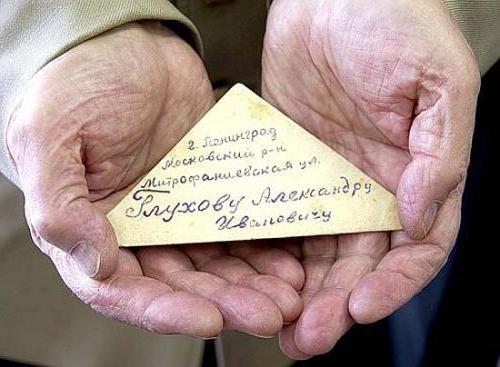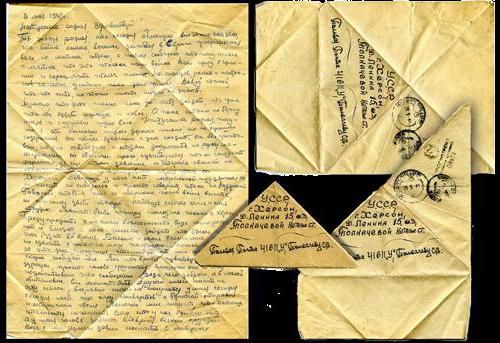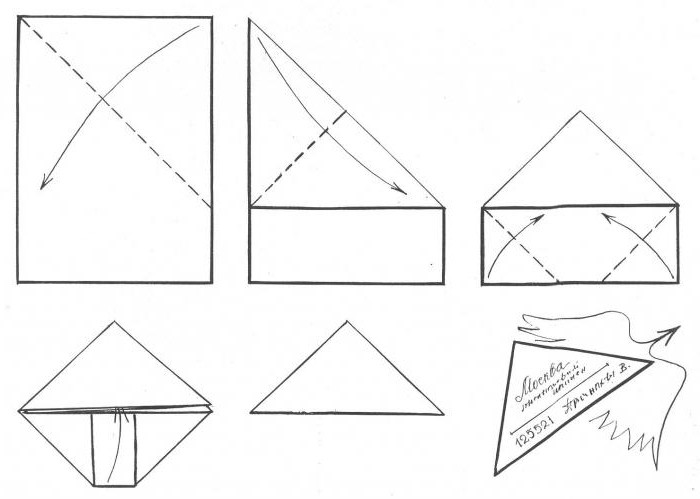How to fold a letter into a triangle? History of soldiers' messages
Many years have passed since the end of World War II. Nevertheless, echoes of it still reach us. These are fragments, and shells left on the battlefield, and bomb craters, and the memory of surviving veterans. Soldiers' letters are another reminder of those terrible years. They were written on simple scraps of paper. Each front-line soldier knew how to fold a letter into a triangle. They were kept by relatives in cherished boxes, bundles, scarves. How to fold a letter in a triangle, they knew at home. Now, rereading these lines, we can imagine with horror how scary people lived during the black war...
How to fold a letter into a triangle? past years
So, how to fold a letter in a triangle was known in every family. And until now, these messages, yellowed from time, written in pencil, are kept as a memory of our heroes. How people waited for letters from the front! These triangles are one of the main symbols of that terrible, formidable era. Only military field mail helped people not to lose each other. Sorting points were created in each front-line administrative center. Signalers worked hard and diligently in the most terrible conditions.
The path of the "triangles"
Yes, times were terrible. Delaying correspondence or delivering it for other purposes was considered a misdemeanor. Envelopes and postcards, of course, were not enough. Publishing houses, of course, began to produce them in considerable quantities. However, first of all, ammunition, canned food, crackers arrived at the front line. At that moment, it was figured out how to fold the letter into a triangle. In the people such a message was called a soldier's.
Front-line soldiers threw letters into mailboxes built from improvised means and reinforced in convenient places. Every day, the postman chose "triangles", secrets and postcards. At the field station, they were processed with calendar stamps, packed in bags and sent by transport to the base. From there, the correspondence was transferred to the sorting points and then followed hundreds of kilometers under the bullets of the enemy, “triangles” passed, and everyone knew the price for them!

Letters from the front, happy and sad
With what impatience the relatives and friends waited for the news! Before folding the front-line letter into a triangle and sending it home, the soldier carefully thought out its content. I did not want to upset my relatives, but the correspondence was not always happy. Many hoped that the terrible official envelopes came by mistake. Wives, children and mothers wanted so much to receive a touching "triangle" informing that their soldier is alive and well ...

Important historical source
Today, in almost every museum or archive, researchers can find a soldier's letter-triangle. How to fold it, everyone knew at that time. Genuine anxiety and love for loved ones are felt in each of them. Dreams of victory, descriptions of front-line life, hope for a peaceful and happy future - all this makes you cry when you look at old triangular letters. Lines about comrades who died in the war, the desire to avenge them, the thirst for life - that's what the messages to relatives carried, incredibly touching and sad.
Even the kids did it
Even the kids knew how best to fold a letter into a triangle in order to send it to their father at the front. It didn't stick. Before writing a letter, it was necessary to fold a triangle from a blank sheet. They met, even inscribed on pieces of newspapers.

Initially, it was necessary to write an address. The reverse side was marked with a line or a dotted line along the edge. It was kept clean so that postal workers could take notes there. If the hero died, a corresponding entry was made here, and the letter was returned to the addressee. The address side in this case was crossed out.
If a soldier for some reason ended up in another part, in the infirmary or in the hospital, a new address was indicated on the clean side of the triangle. Some letters could "walk" for years and found a soldier only a few years after the end of the war.
Front "triangles" were also written on pages torn from school notebooks. They were issued during the war in a row, the pages were numbered. Of course, it was possible to buy a notebook, but they were rare in stores. Therefore, they wrote messages in small, neat handwriting, trying to save as much space as possible for the most important news.
The soldier's "triangle" is the so-called echo of war. The surviving letters make us think with trepidation about that terrible time, about Soviet heroes, about how important the support of loved ones was, expressed in warm words written on paper by our own hands.
